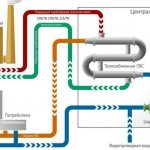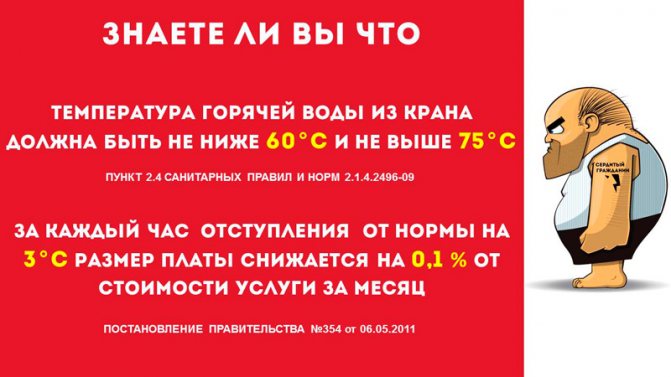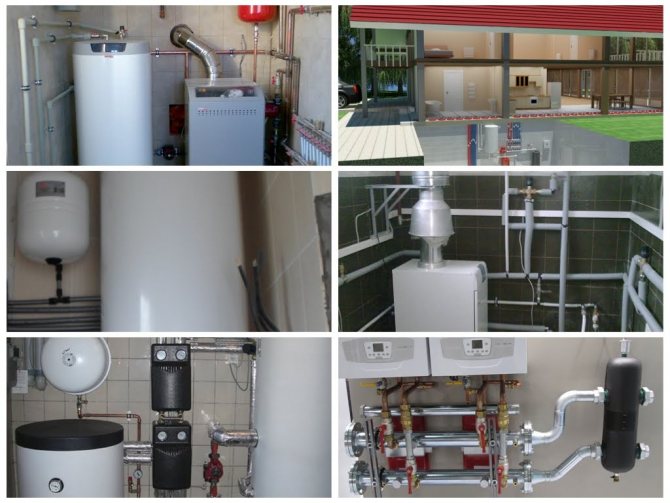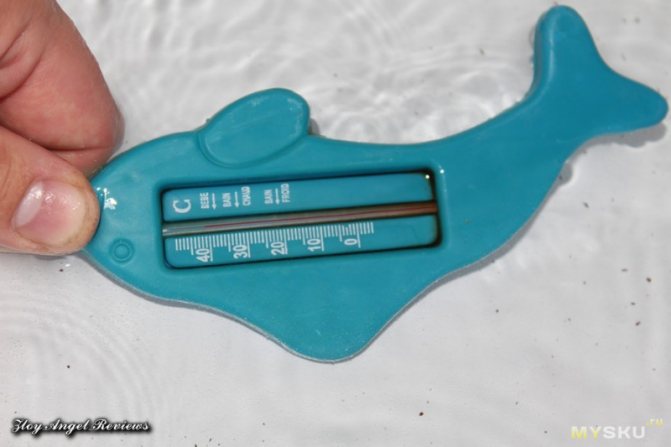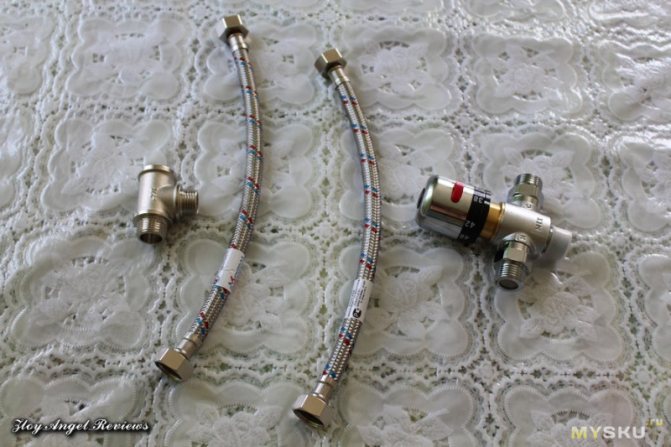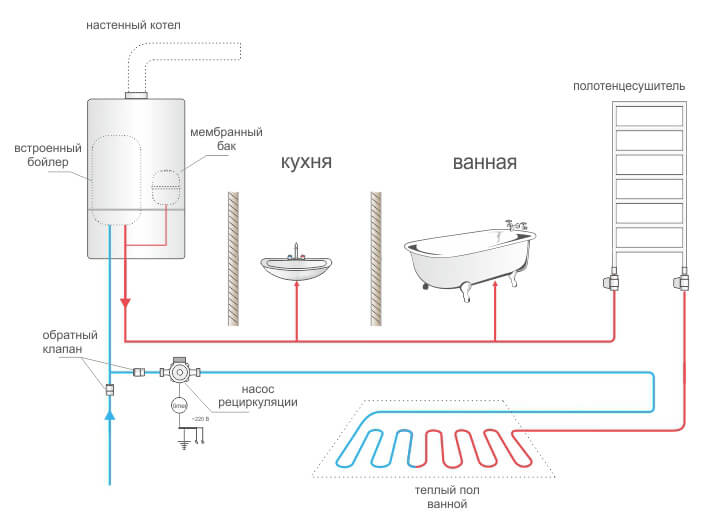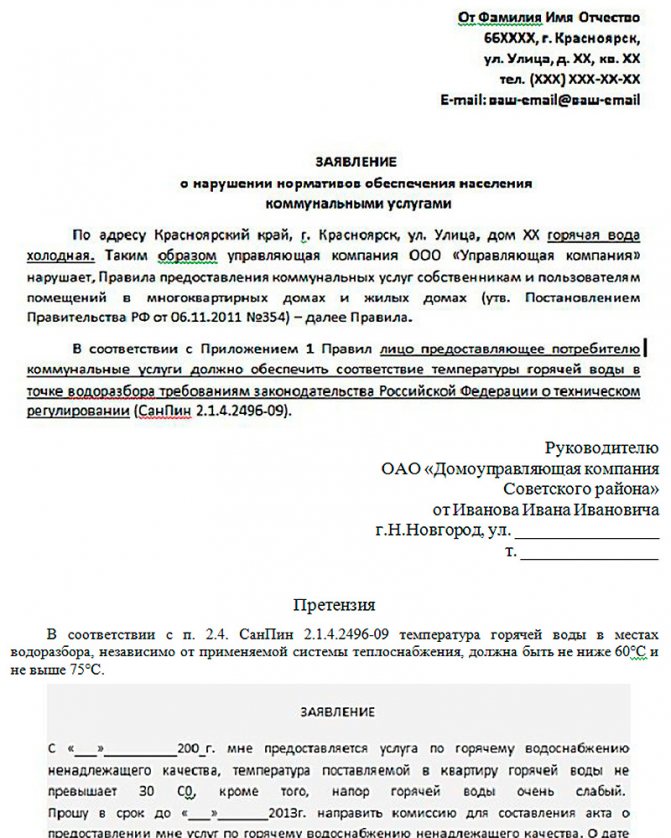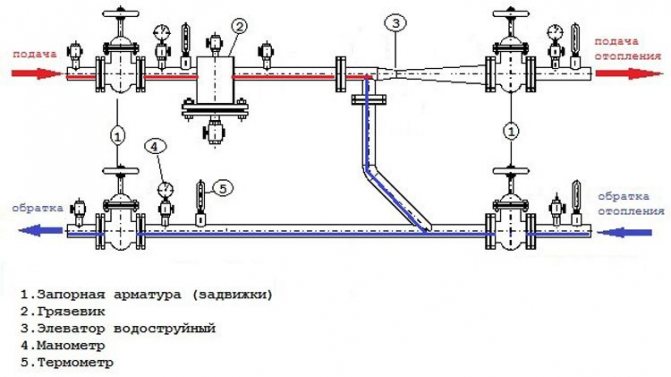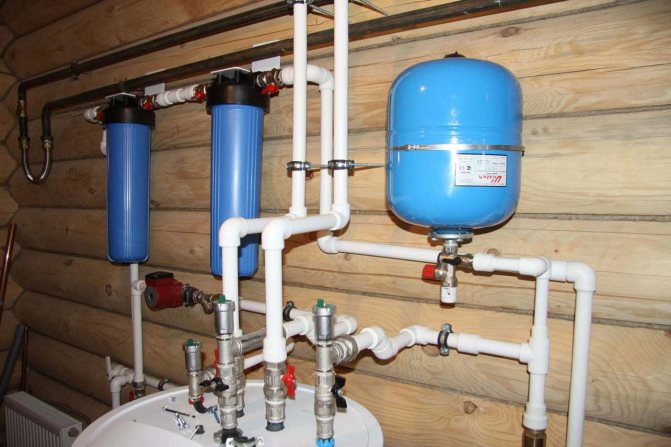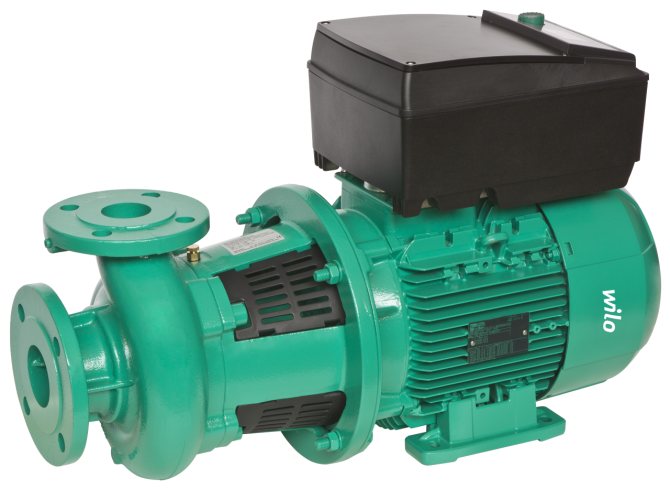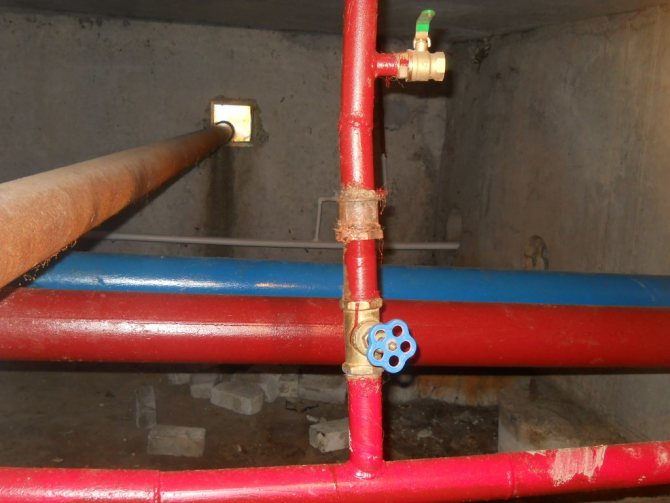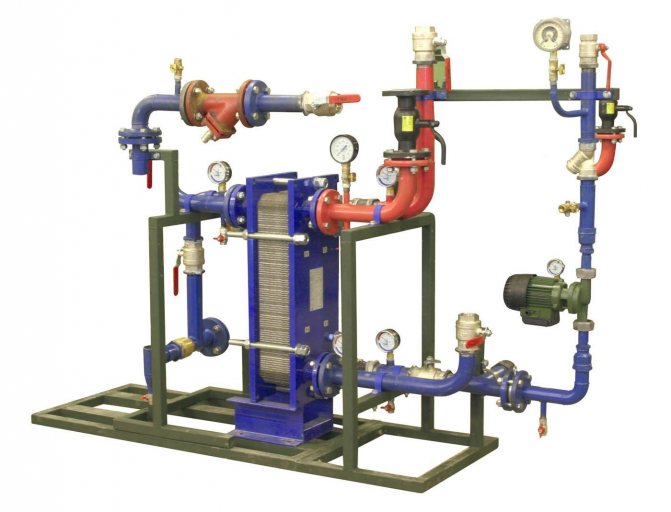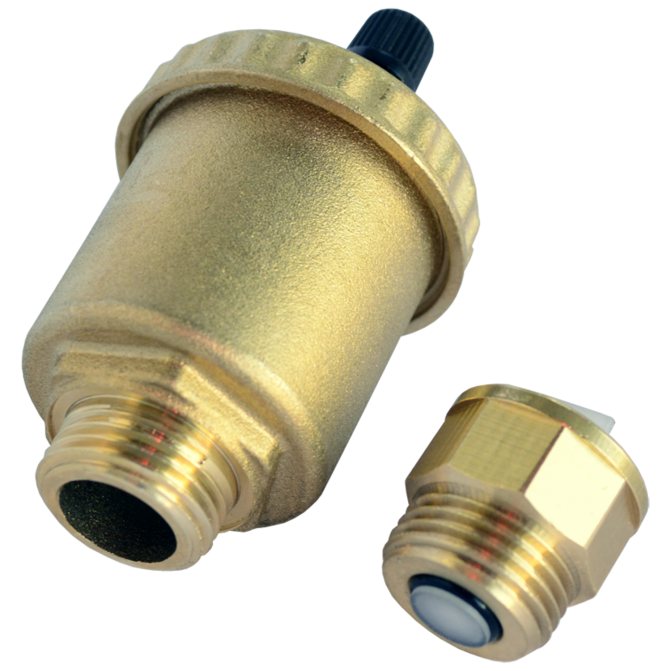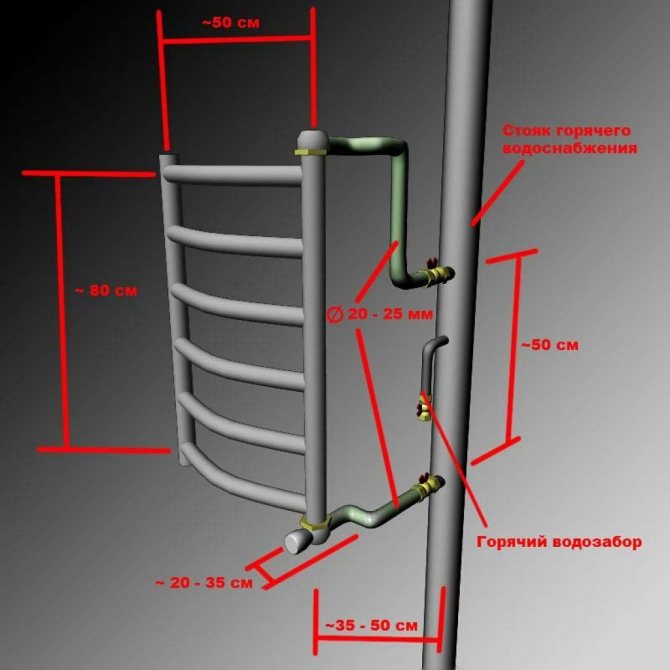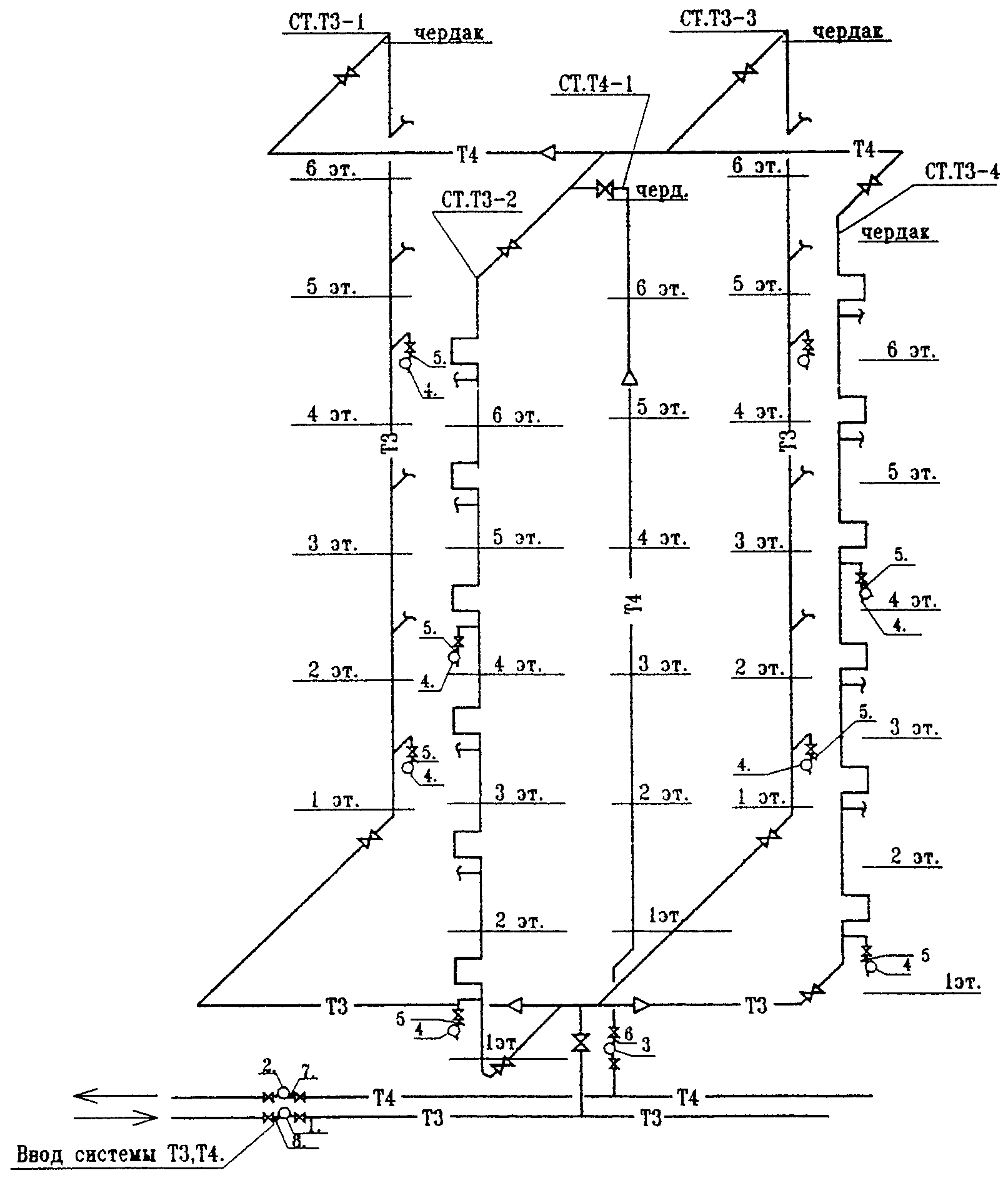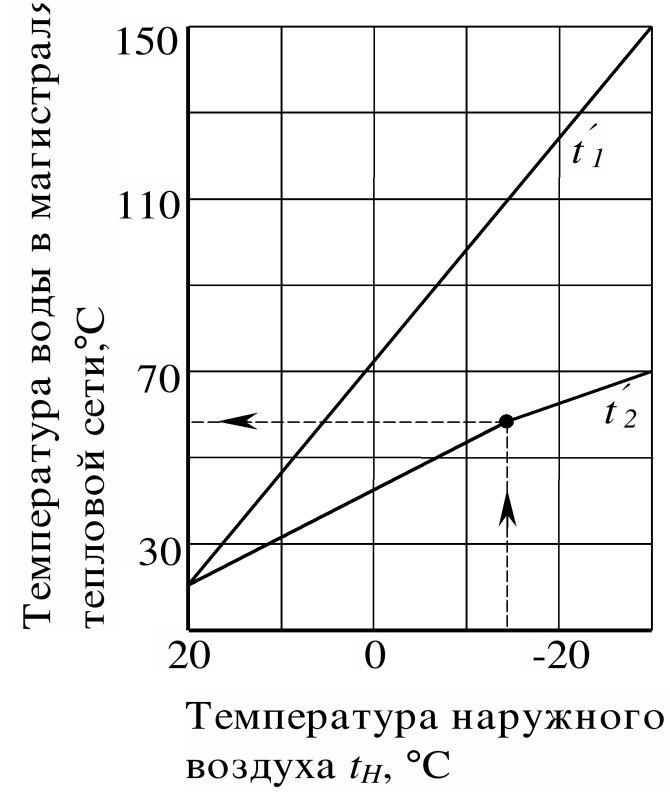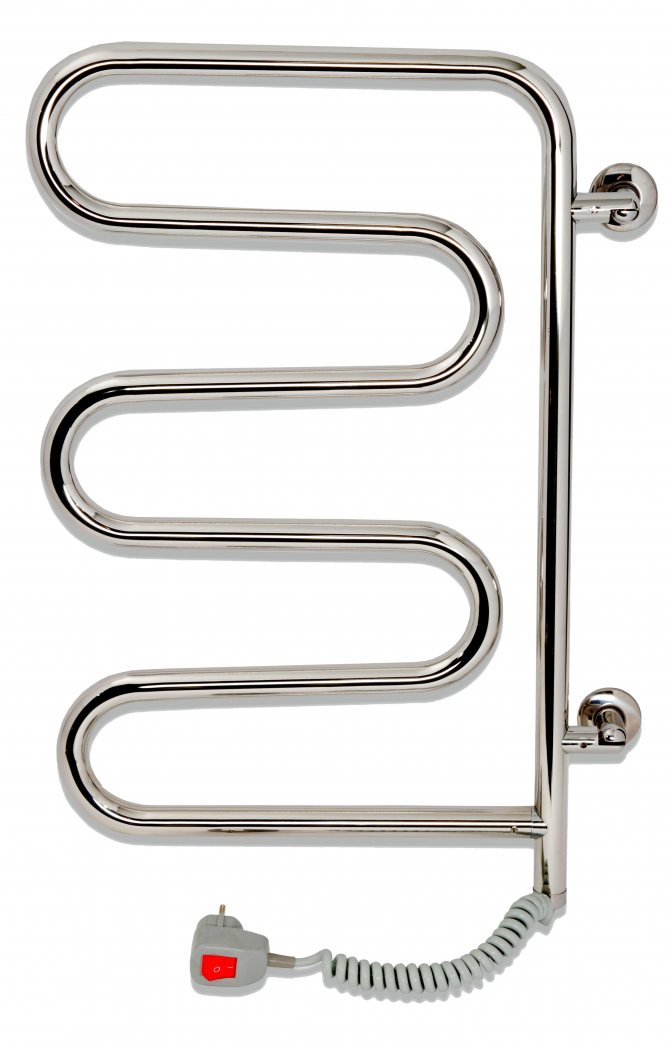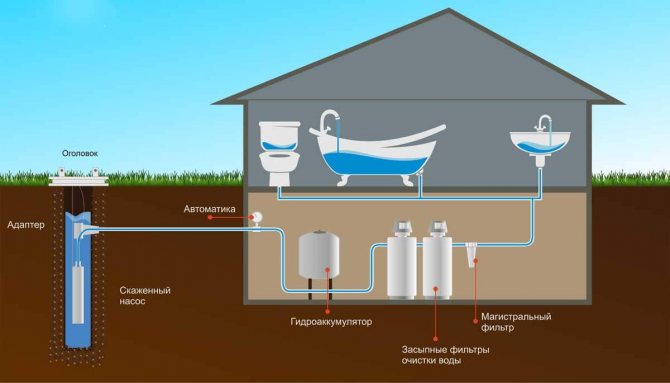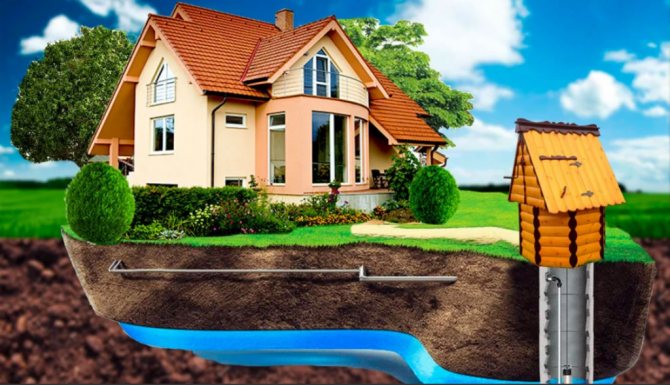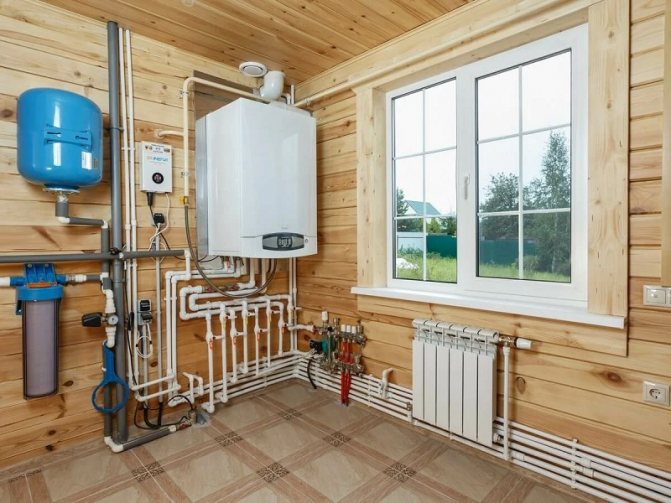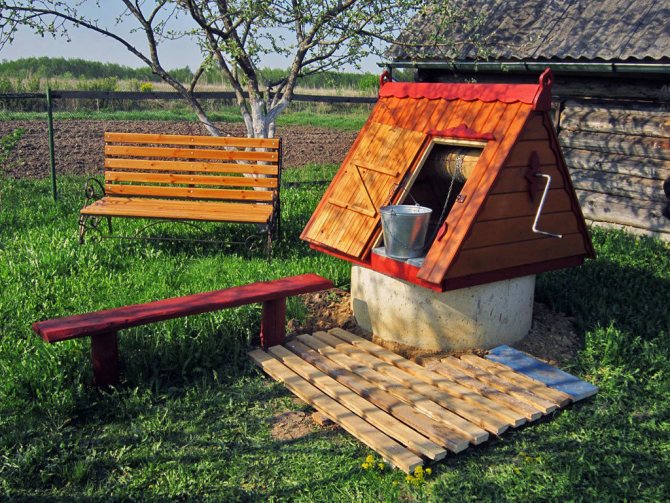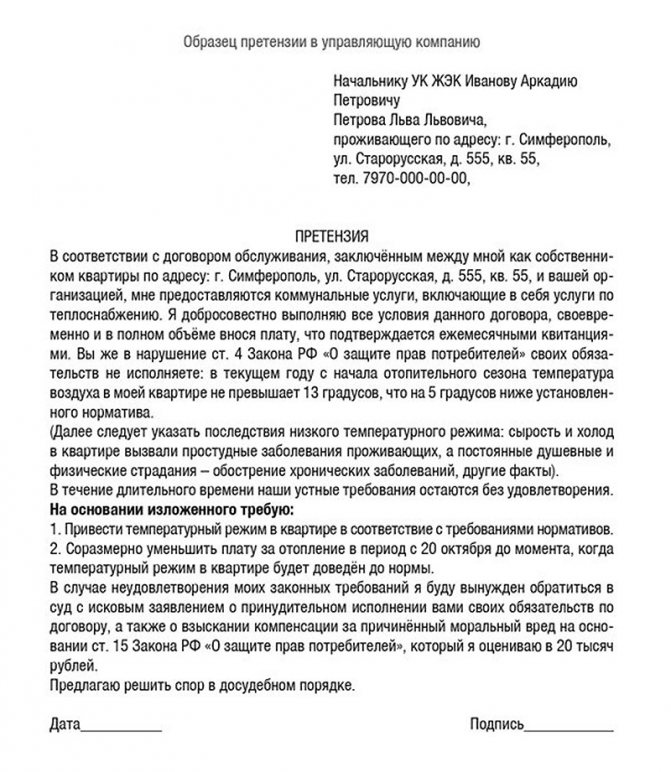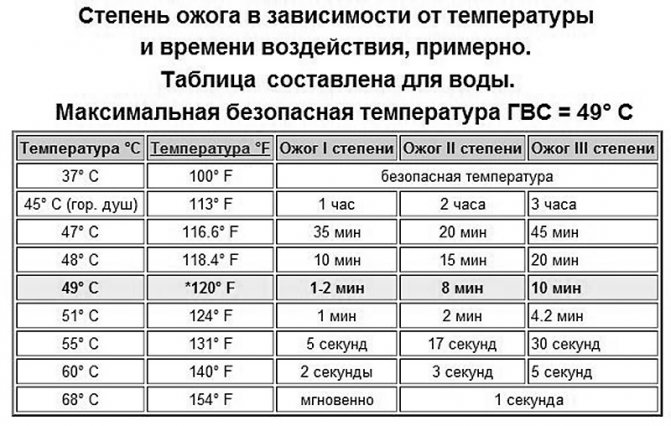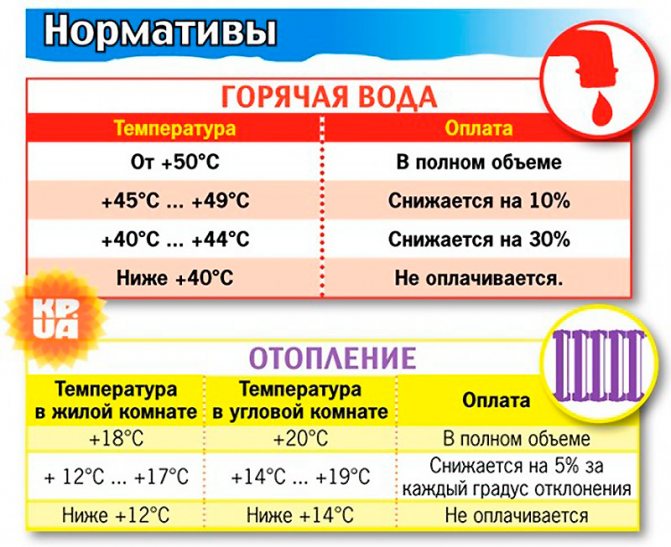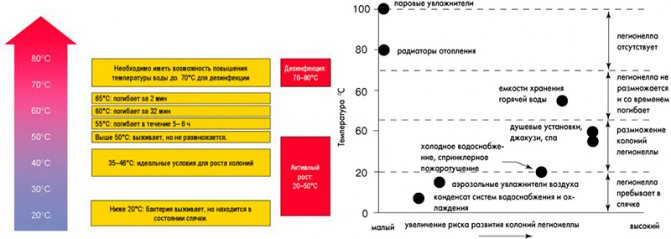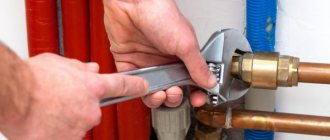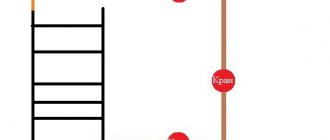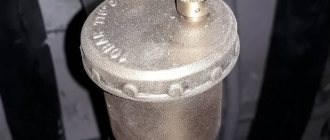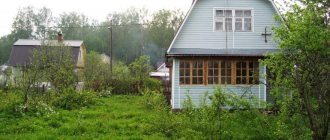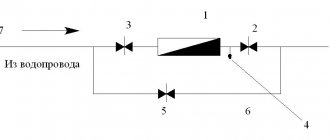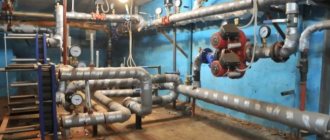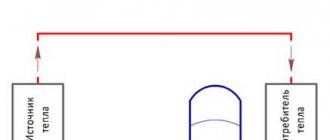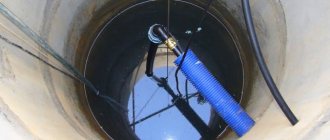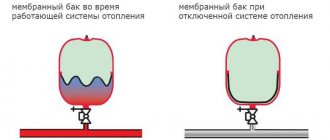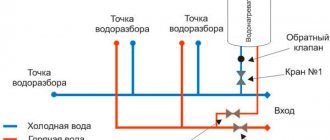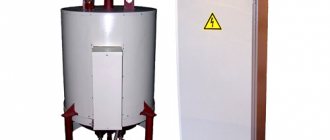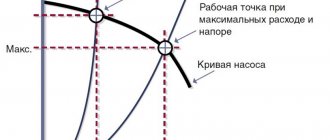Home / DHW
Back to
Published: 07.12.2019
Reading time: 3 minutes
0
1659
With a large distance from the boiler to the water intake point, DHW recirculation may be required. It is necessary for the constant movement of liquid in the hot water circuit.
- 1 What is recirculation for?
- 2 Recirculation diagram
- 3 Installation rules
- 4 System shutdown
Instantaneous heater system
Immediately after opening the tap, hot water is started in a private house: the circuit works on the basis of one of the following components:
- gas water heater;
- instantaneous water heater powered by electricity;
- heating circuit of a two-level heating boiler;
- plate heat exchanger combined with a heating circuit.
The energy that is used to heat the water is activated instantly as soon as the water begins to move through the heater. In order for the system to heat up the water, the speed of its flow from the tap is limited. These indicators (the temperature of hot water in a private house and the intensity of the jet) are closely related.
The following indicators will demonstrate the required level of water heater power for different purposes:
| purpose | Required power |
| Take a shower in warm water | 10 kW |
| Fill the bathtub with water at a comfortable temperature | 18 kWt |
| Fill the tub and use hot water in the kitchen at the same time | 28 kWt |
Classification
What types of hot water supply for residential buildings are applicable for our case - a suburban cottage or a country house?
Central and local
In the case of a centralized hot water supply system for a private house, water is supplied to it from an external source (CHP, boiler room, boiler room) already heated to the required temperature. In this case, water can be supplied both from the heating network (such a scheme is called open heat supply), and from the cold water supply system with subsequent heating (closed heat supply).
Note: a circuit with a separate supply of hot water from an external source from heating is called independent.
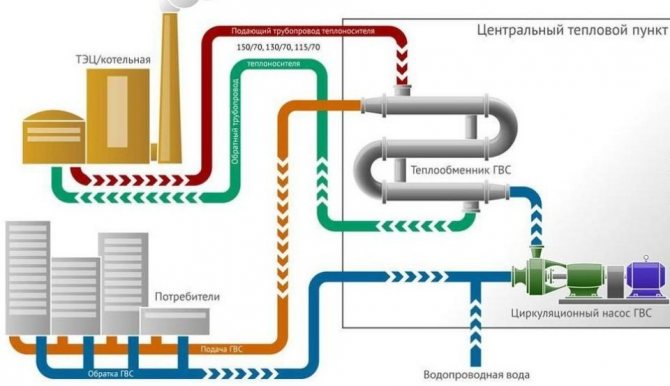
Independent hot water supply
Local DHW means using your own water heater.
Dead-end and circulation
If you have a dead-end water supply at home, hot water cools down quickly in the absence of its consumption. Opening the tap, you pour the cooled water down the drain for a long time. What is especially unpleasant, in the presence of a water meter, the consumption of nominally hot, but in fact cold water is paid at a higher (for hot water supply) tariff.
Continuous circulation completely solves this problem: now, to heat the water, it is enough to drain it from a short supply to the mixer, which takes no more than a few seconds.
Circulation can be organized:
- Due to the pressure difference between the two lines of the heating network - supply and return;
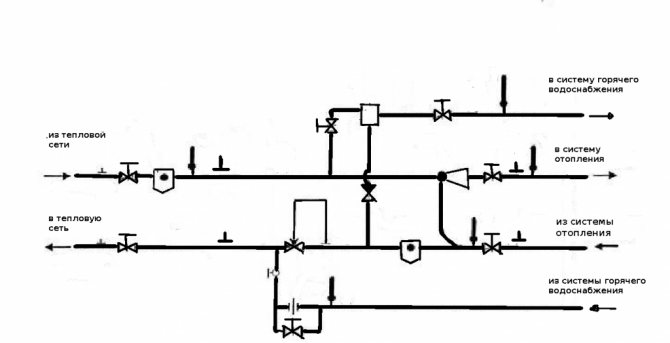

DHW circulation from the supply to the return of the elevator unit
- With the help of a throttling washer installed on one of the threads. With a diameter by a millimeter larger than the diameter of the elevator nozzle, it creates a drop of the order of 1-2 meters, which is quite sufficient to overcome the hydraulic resistance of a circuit of moderate length;
- Circulation pump.
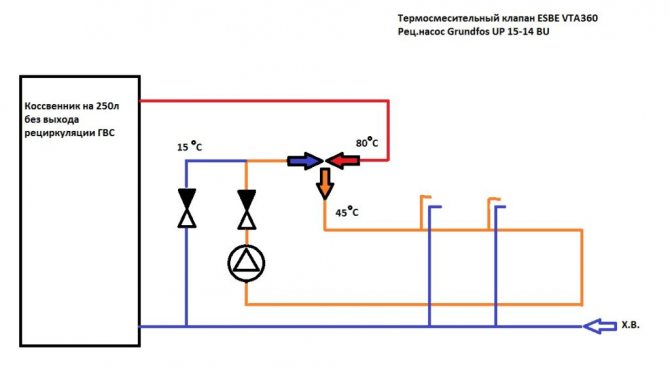

DHW with boiler, circulation pump and thermostatic mixer
Tee and collector
The first type of in-house engineering hot water supply system is very familiar to all of us from Soviet-built houses: mixers and other consumers are connected to a single hot water supply through tees or bends.
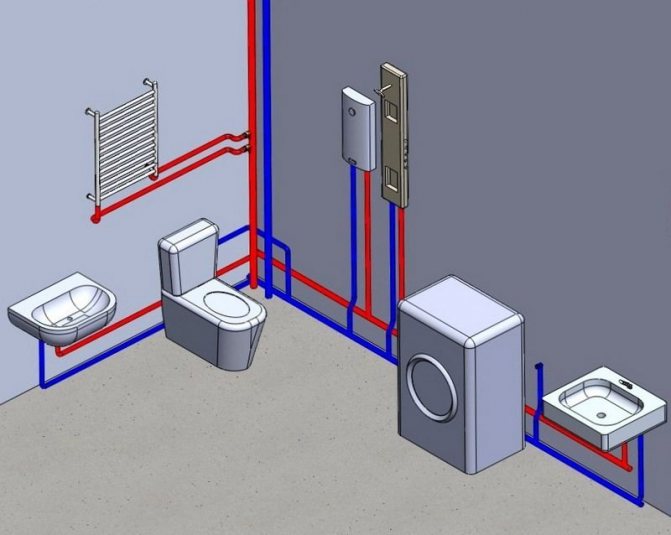

Tee wiring diagram
Such a wiring has a low material consumption and, when installed openly, is exceptionally maintainable, but it has a serious drawback: if you turn on the hot water tap in the kitchen to overflowing, you will hear a cry of a spouse freezing in the shower from the bathroom, full of grief. The DHW pressure will drop in the entire water supply.
Collector wiring is devoid of this problem. Hidden (as a rule) connections to plumbing fixtures are united by a manifold-comb. The taps installed on it allow you to disconnect any device from the manifold cabinet.
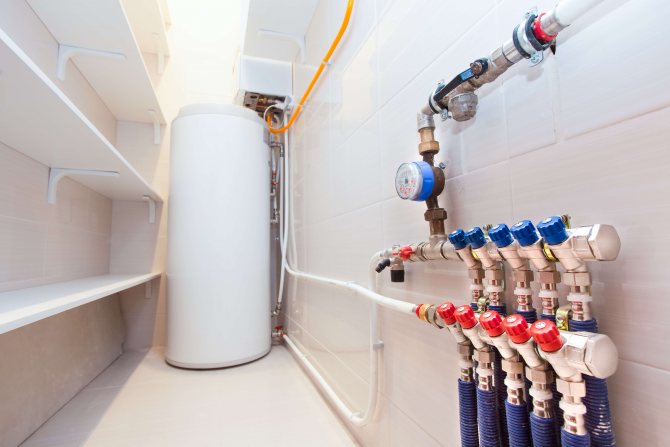

DHW and cold water collectors
System with storage water heater
The center of the system is a boiler, a volumetric heat-insulated tank made of metal. The following elements are built into its lower part:
- tubular heat exchanger, which is directly connected to the heating boiler;
- electric heating element.
The tank contains water, which is almost constantly heated by the boiler. The electric heater only occasionally participates in this process when the boiler is stopped for short periods. Therefore, the storage tank is called an indirect heating boiler.
Hot water that enters the kitchen or bathroom is consumed from the tank, namely from the top of it. At the same moment, cold water flows into the lower part of the boiler from the water supply system. It heats up and rises to the top to then go to the mixers.
Equipment selection rules
When choosing the option of how to make hot water in a private house, you need to consider the following factors:
- Dimensions. In a small private house, a large storage tank does not fit, therefore, preference is given to a compact flow-through model.
- Number of residents. The more a person lives under one roof, the higher the likelihood that water will flow out simultaneously from several points: in the bathroom, in the kitchen. If the house has two floors, and each of them has a bathroom, then the water consumption increases. Here, a storage option is preferable, which can provide several points with hot water at once. In this case, the intensity of the jet does not decrease and when the additional point is turned on, the water temperature does not change.
- Aggression. If a storage tank is used, the water becomes hot even with a low pressure. The same cannot be said about the flow model, which does not react to a small jet and does not heat it up.
- Cost. An important parameter that is considered when choosing. The cheapest electric flow heater costs from 4 thousand rubles, and a storage heater costs from 7 thousand rubles.
Houses with temporary residence
Before each owner of a country house or summer cottage, the question inevitably arises of how to organize heating and hot water supply to their home and at the same time get maximum comfort and a minimum of headaches. Let's try to understand the variety of existing schemes. In the first part of this article, we will analyze these engineering systems for houses connected to gas networks, but not used for permanent and year-round residence.
So, if gas is connected in your house, but you do not live in it all year round, but use it as a summer residence, then we are firmly convinced that in this house should have a minimum of water... The explanation is as follows: if there is a functioning water supply system in the house, this means that it is necessary to maintain a positive temperature in this house constantly and all year round. And if you do not live in this house in winter, then maintaining a positive temperature in it all winter is not only considerable financial costs, but also a constant headache and thoughts about, “Has anything happened to the heating system? Has she passed out? Has something frozen there ...? "
Based on this, our recommendations boil down to the fact that an ideal heating system for a house with gas, in which they do not constantly live - this is a heating system on gas convectors.
A gas convector is a heater without a water circuit.To put it simply, it is a radiator with a gas burner inside. And if there is no coolant (water) in it, then there is nothing to freeze in it. In addition, heating with gas convectors is a decentralized system. All convectors work independently and independently of each other, you can set a different temperature in each room, you can simply turn off some of the convectors, and leave some in your absence in the mode of maintaining the minimum temperature. Most convectors are non-volatile, i.e. do not require an electrical connection. This means that from a safety point of view, the electricity in the house can be cut off in your absence.
Now we turn to the hot water supply system (DHW) for a house with temporary residence. As it was written above, the gas convector does not heat the water, which means that for these purposes it will be necessary to use a separate water heater. It can be absolutely any type of device: electric or gas water heater (both can be storage or instantaneous). The choice of the type of water heater depends on many factors and we will not describe it in detail here, because this does not affect the essence of the question. And this essence is influenced by the fact that no matter how you heat water in a house that you do not live in permanently, the water supply system should be made so that before the onset of cold weather, water from pipes, washing machines and other consumers is easily, quickly and reliably drained.
With this scheme, you are guaranteed to get a home that is comfortable for living in the warm season and safe in the winter season.
Hot water temperature in the tap according to the standard
It is possible to reduce the payment for hot and cold water even if the tenant has been absent for more than five days. However, this is possible if the payment is calculated according to the standards, without counters, and requires documentary confirmation (transport tickets, a certificate from the hospital, etc.). Recalculation is made within five working days, and if the Management Company does not agree with the claim, then the tenant must receive a written reasoned refusal not less than one month after the application.
Hot water supply of a private country house
Be prepared for the chief engineer to show his knowledge and in response to you, "poke under your nose" the text "... Before taking samples of hot water, drain the water until a constant temperature is established. The time for draining water can be up to 10 minutes ... ", set out in the same clause 7.5 of the Methodological Guidelines MUK 4.3.2900-11. Inform him in response that the Government Decree has greater legal force than the MUK Rospotrebnadzor, especially since the Government Decree came into effect later by virtue of." Another "crown number-focus", which is often performed by the heat supply organization (TSO) before measuring the temperature of hot water (Tgv) - on the eve or at night of the planned measurement day, raises Tgw to the required 60 - 65 degrees C, or even up to 70 degrees. FROM.
The temperature of hot water in the tap in the apartment, sanpin
In short - mostly 60 - 75 degrees Celsius before September 1, 2012, and in all cases, without exception, 60 - 75 degrees Celsius after September 1, 2012. With the installation of water meters, this issue becomes almost of paramount importance, since by reducing the temperature of the hot water supplied to the apartments, the contractor not only saves on heating, but also increases the consumption of consumers in the tap of hot water, the tariff of which is higher compared to cold water.Sometimes you can find an answer option: "at least 50 degrees Celsius", with reference to paragraph 5, section II, Appendix No. 1 to the Rules for the provision of public utilities to citizens, approved by Decree of the Government of the Russian Federation No. 307 of May 23, 2006. This is an incorrect answer. for the vast majority of cases.
Recirculation of the hot water supply system DHW.
Hot water recirculation is arranged as follows:
Hot water from the storage tank, boiler, goes through the internal pipeline to the taps along with cold water. Considering that hot water pipes necessarily have thermal insulation, after eight or ten hours, if it is not used, the water in the pipes is cooled.
Provided that the tap is at a greater distance from the boiler, for example, on the upper floor, then in order for hot water to flow, it must be drained for about five minutes.
If you do not want to drain water from the tap all the time, then you should choose a system with hot water recirculation. Such a system has supply and return pipelines, but the system is very convenient and comfortable.
What is the standard for the temperature of hot water in the apartment?
The owners of the highway are obliged to solve these problems. The only thing that a tenant should know is how to properly draw up a complaint, on the basis of which the representatives of the housing office will recalculate for the services provided. What to do when deviations are detected Water does not meet the requirements of SanPiN? In order for you to revise your bills for hot water, you need to coordinate your actions, in accordance with the provisions spelled out in Decree No. 354 of the Government of the Russian Federation. Claims qualifying the sequence of the consumer's actions:
- If you managed to find and fix a violation, it is worth informing an employee of the dispatch service about it orally or in writing. The employee of the service organization must register the fact of the user's request.
How to measure temperature
To find out what the temperature of the hot water supply is the norm or not, first independent measurements are taken, and only after this it is necessary to invite official representatives of utilities to carry out official measurements and draw up the corresponding supporting documents.
To measure the temperature of hot water on your own, open any tap with hot water and drain the water within 180 seconds, then fill any container with water (for example, a liter jar) and measure the temperature with an ordinary household thermometer. To do this, dip it into the jar for a few minutes and wait until the thermometer readings stop changing. If the thermometer shows underestimated or overestimated values, contact the utilities with the corresponding statements. If it is impossible to make a written application for some reason, then the dispatcher is obliged to accept an oral telephone complaint or an application for a control measurement by the official representatives of the company. If the violation is eliminated without control measurements, then the dispatcher is obliged to inform the applicant about this.
If the reason why the temperature schedule is violated is unknown, then the representative of the communal organization is obliged to come to the applicant for an official one no later than 120 minutes after receiving any statement - oral or written. Other time intervals are discussed with the applicant.
Repeated measurements of the DHW temperature are already made by an official, after which an act of measuring the water temperature should be drawn up, and on the basis of this document, in case of an obvious violation, the payment for DHW should be recalculated at other tariffs. The act is drawn up in two copies, one copy is sent to the management company, the second must be with the owner of the property.
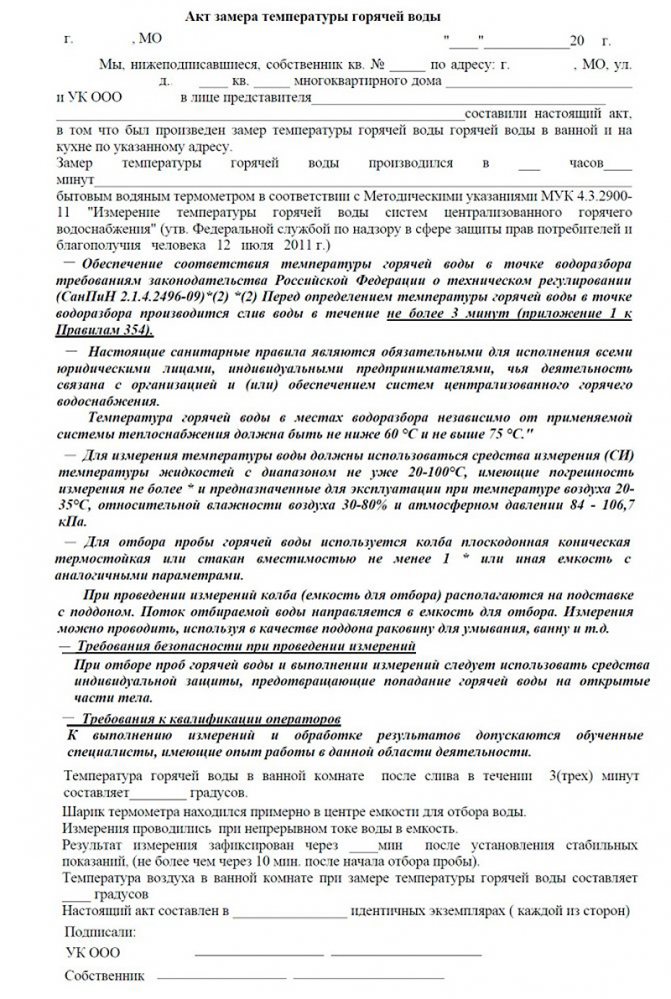

DHW control metering act
What should be the temperature of hot water in the tap according to existing standards?
- 1 Norm of temperature of hot water in the apartment
- 2 What are the temperature standards for hot water established by SanPin
- 3 If the norms do not correspond, which coefficient for calculating hot water is valid
- 4 Hot water is inappropriate where to complain
- 5 How to make a complaint
- 6 How to request recalculation
The situation when hot water in the tap cannot reach the proper temperature level in any way is not so uncommon. And in order to understand that the problem exists, it is not at all necessary to measure the degree of water, it is enough to try to take a bath. Such an event will be more like hardening than a hygienic procedure. What should be done if the hot water temperature is clearly far from the norm, and where in this situation should a complaint be made.
What should be the maximum temperature of hot water in the tap according to the standards
Home / Water supply / Centralized / What should be the maximum temperature of hot water in the tap according to the standards Regardless of the season, we need warm water. It doesn't matter where a person lives, in Moscow or in a village remote from the central regions, he wants to enjoy comfortable conditions. You will say that it is enough that there is light, gas and cold water. But many, most likely, will want to argue with such a statement. The content of the article:
- Normative acts
- Maximum and minimum indicators
- How to correctly measure the temperature of the liquid at the point of intake
- What to do when deviations are found
- What to do after you receive the document in your hands
Regulations It is difficult to imagine a modern home without hot water.
- When it comes to night time (from "zero" hours to five in the morning) - the tolerance can be within five degrees.
- In the afternoon (from five in the morning to twelve in the morning) - the discrepancy should not be more than three degrees.
Is it really so important to have hot water in the taps? This question is of fundamental importance (how to make heating wiring in a private house is written here).
Double-circuit floor-standing gas boilers
In the second part of our review of heating and water supply systems, we will analyze systems based on double-circuit gas boilers. After all, it would seem that one device that heats water both in batteries and in the hot water system is a very convenient choice, but not everything is so perfect.
Firstly, floor-standing double-circuit gas boilers (they are also called combined gas-water heating devices, abbreviated AKGV), as a rule, have a very small capacity for hot water. This means that it is almost impossible to provide a comfortable hot water supply in a house in which there are more than 2 hot water points.
Secondly, floor-standing double-circuit floor boilers are usually produced with a capacity of up to 25 kW, which are designed for houses with an area of up to 200 m2. Although this second point follows from the first: it is difficult to imagine a house with an area of more than 200 squares, in which there are only 2 hot water points.
Thirdly, you must be aware that if you use a floor-standing double-circuit boiler, then it should work both in winter (for heating and hot water supply) and in summer (only for hot water supply). In this case, your heating system must be installed in such a way that the heating circuit for the summer is shut off by means of taps and bypasses, and the boiler is not in the kitchen, but in a separate boiler room. Otherwise, being in a house where a double-circuit floor boiler works in summer will be almost unbearable from the heat.
Fourthly, there is always water in your heating and hot water supply systems, which means that leaving the house for a long time unattended can be fraught with defrosting of the system. After all, the boiler can die out from a gas interruption or a banal gust of wind.
Let's move on to the advantages of double-circuit floor boilers. They are there too!
All the advantages of AKGV lie in their simplicity, which means reliability. The vast majority of these devices are non-volatile.This means that the heating system will operate without electricity (assuming that it is correctly installed). All spare parts for such boilers are available and it will not be difficult to find anything for him. Anyone can perform the simplest repair of an AKGV boiler, which is extremely important for remote and hard-to-reach settlements.
The summary of everything written is as follows: a double-circuit floor-standing gas boiler will be optimal for houses of small and medium size (up to 200 m2), with a natural gravity circulation of the coolant and a small number of hot water points located in rural areas.
Optimum temperature of hot water in the tap of a private house
With a closed system, such a technological break is not needed, since accelerated depreciation of hot water pipes occurs only in the area from the boiler to the apartments, that is, almost only inside the house, replacing a fragment of such a small area is a matter of a maximum of two days, but the heat supply itself, that is, not drinking , and the technical hot water supplied to the heating system already has a sufficient amount of anti-corrosion additives, the pipes wear out slowly, and their replacement in the summer is invisible to any of the residents. The paucity of closed centralized heating systems, among other things, is due to the fact that a residential building with a boiler room leads to an increase in the cost of housing construction, which builders have always tried to avoid. Thus, the answer option "at least 50 degrees Celsius" is valid only in such extremely few situations where there is this very boiler room.

